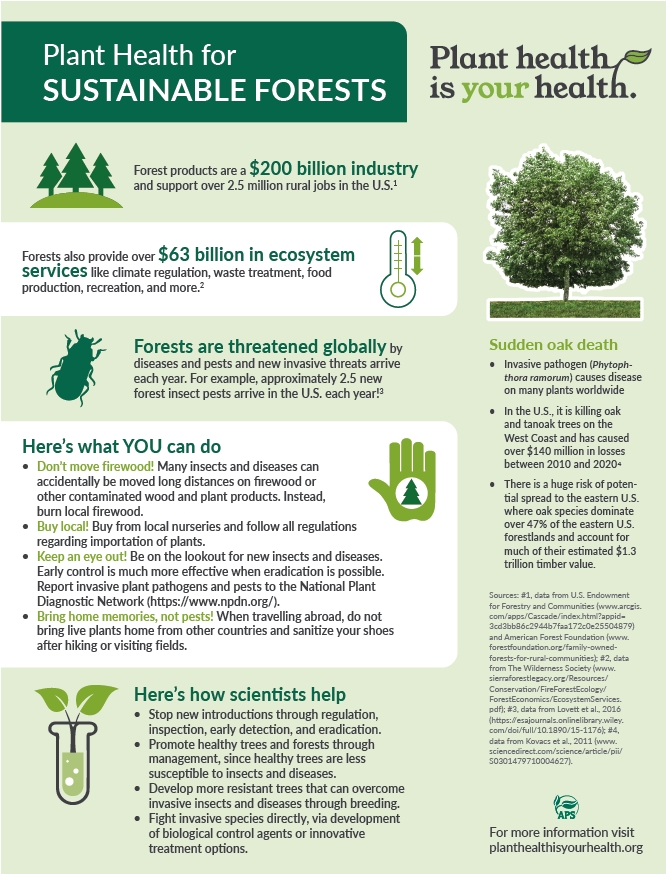Plant Health for Sustainable Forests
Healthy forests are essential to our planet and society. Collectively, Earth’s forests provide > $63 billion in ecosystem services such as climate regulation, waste treatment, food production, and recreation. Each year, in the U.S. alone, forest products comprise a
$200 billion industry, supporting > 2.5 million rural jobs!

However, U.S. and global forests are threatened by native, invasive, and reemerging diseases and pests. For example, the invasive tree pathogen Phytophthora ramorum causes Sudden Oak Death. This disease has killed oak and tanoak trees along the West Coast, resulting in $140 million in losses between 2010 and 2020! Sudden Oak Death is a significant threat to the $1.3 trillion timber industry in the eastern U.S., and the associated pathogen infects dozens of woody shrubs and trees in forests and landscapes. Maintaining healthy forests is essential to maintaining a healthy economy.
Fortunately, U.S. Forest Service, state, industry, and academic scientists are at the forefront of protecting forests and responding to forest health challenges. Informed by scientific research, government regulations are designed to limit the accidental importation of pests and pathogens. Early detection and, when feasible, eradication efforts allow forest managers to quickly discover and respond to emerging threats. Researchers and practitioners of plant pathology and entomology play critical roles in keeping trees healthy through management. Breeders and plant pathologists partner to develop disease-resistant tree varieties, and scientists are discovering innovative strategies for managing forest diseases and pests, including the use of biological control agents.
You can help keep our forests healthy! Many forest pests and diseases are spread through the importation and distribution of nursery plants and the transport of firewood and other contaminated wood products. For the home landscape, seek out trees and shrubs from local nurseries and plant native species. Traveling internationally? Familiarize yourself with regulations concerning the importation of plants and plant products. Do not bring home plants or seeds. And if you are in natural or agricultural spaces while traveling abroad, be sure to sanitize your shoes before coming home. Whenever possible, buy firewood locally. And keep an eye out for insect pests and diseases in forests and landscape plantings. If you see something unusual, contact the U.S. National Plant Diagnostic Network. This nationwide network of scientists leads monitoring and reporting efforts for emerging diseases and pests. With locations at many U.S. land grant institutions, there is probably a National Plant Diagnostic Network near you. Finally, advocate and support public funding of forest health research. We all have a role to play in keeping our forests and our planet healthy.
Plant Health Is Your Health!
View Spanish Version
View Portuguese Version
